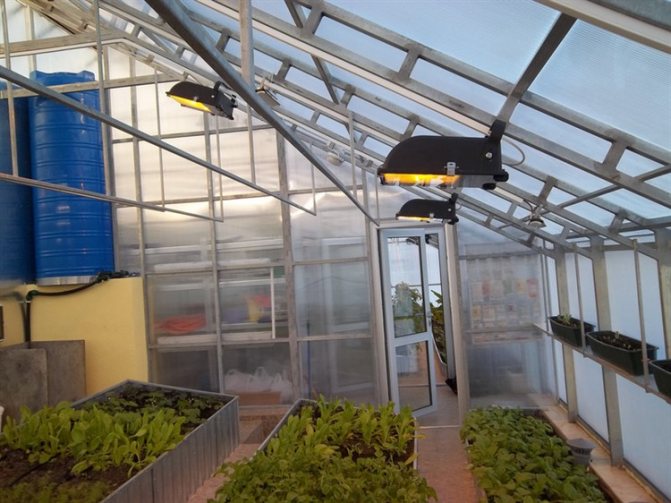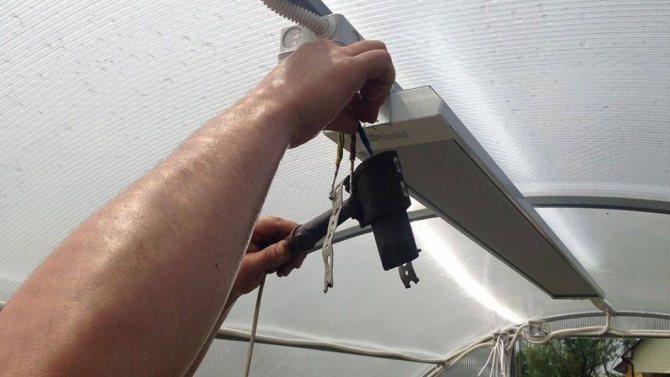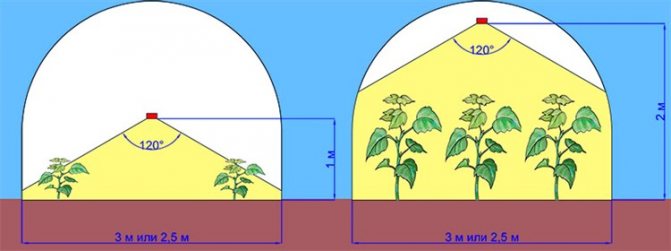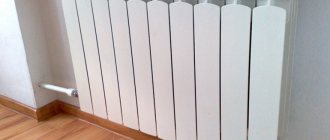| A place | Name | Feature in the rating |
| Best infrared heaters for greenhouse |
| 1 | STEP 340 | The best solution for greenhouse heating. Longest service life |
| 2 | Teplofon IR 1000 ERGUS-1,0 / 220 | Great heat dissipation |
| 3 | MO-EL 766 | High quality components. The best degree of moisture protection |
| 4 | Ballu BIH-S2-0.6 | The economical choice for small greenhouses |
| The best convector heaters for the greenhouse |
| 1 | Electrolux ECH \ AG-1500 PE | High precision temperature control in the greenhouse. Efficient heating element X-DUOS |
| 2 | Ballu BIHP / R-1500 | Combined heating system |
| 3 | Timberk TEC.E0X M 1500 | The best combination of price and quality. Good safety margin |
| The best ground heaters for a greenhouse |
| 1 | Heatline HL-GR-90W (area 1.8-3.6m²) | The best price offer. Reliable protection against electric shock |
| 2 | Therm ENGL-1-TK-0.18 / 220-4.0 | Optimum operational stability |
| 3 | Green Box Agro 14GBA-300 | Regulator included. Heating efficiency |
The greenhouse allows you to grow seedlings or harvest during the winter months. To do this, the owner needs to think about safe and efficient heating that will ensure the growth of the plants. The review presents the best heaters that can be used to heat greenhouses. The rating includes infrared, convection and tape ground heating systems powered by a household electrical network. The estimated position was determined based on the characteristics of the equipment and feedback from growers who have used these heaters in their greenhouses.
Varieties of polycarbonate greenhouse heating systems
The simplest solution to the issue related to the organization of additional heating in the greenhouse can be the installation of a conventional stove in the room. In this case, the stove is erected in the middle of the room, the chimney is brought out, firewood, coal, peat are used as fuel. In order for the plants to feel comfortable, they equip the simplest ventilation system. It would seem that this method is quite simple and affordable to implement, but the main disadvantage of stove heating is that it is impossible to achieve a uniform distribution of heat over the entire area of the greenhouse. Therefore, plants that are closer to the stove receive an excess of heat, and their more distant counterparts receive a shortage.
Some summer residents are trying to equip electric heating in the greenhouse. To do this, they mount various heating elements, convectors, fan heaters around the perimeter of the greenhouse. Also, the systems of cable heating of greenhouses are very popular, which provide an even distribution of heat throughout the entire volume of the room; during installation and subsequent maintenance, they require a minimum investment of money. Greenhouse electrical heating systems can be connected to an automatic regulator that will adequately respond to changes in air temperature outside the room, maintaining a predetermined temperature in the greenhouse. Those wishing to equip electric heating in their greenhouse should not forget that you have to pay for electricity. The cost of paying for electricity for heating air in a greenhouse directly depends on the selected type of heating element, therefore, electric heating is not always justified from an economic point of view.
The most acceptable way to heat a greenhouse is the use of infrared heaters. Infrared heaters do not heat the air in the room, they only heat the plants.Moreover, infrared heaters do not emit light, consume a small amount of electrical energy, which justifies their use even in small greenhouses.
Benefits of infrared heaters
An infrared heater is a piece of equipment that emits rays similar to the sun. Objects and surfaces absorb them, and they, in turn, give off heat to the air. Sunlight gives exactly the same thermal effect.
Thanks to this, infrared heaters have the following advantages:
- low power with high efficiency, which allows you to save on electricity;
- practicality in operation;
- do not create drafts;
- distribute heat evenly throughout the room.
Using convection heaters, you can see that the heated air rises upwards, while the cold air remains below. Such devices are ineffective in terms of heating greenhouses, since the plants are located just below, and they will not have enough heat. Infrared heaters for greenhouses are good because they evenly distribute the heated air, thereby creating optimal conditions for plant growth.

Also, IR devices are able to get rid of drafts, which are undesirable for many vegetables and herbs. To do this, you just need to place the device in the area where there is poor thermal insulation - during operation, it will eliminate heat losses without creating air movement. Infrared batteries are highly efficient.
These devices are highly practical. Their advantage over other heating devices is the ability to divide the room into zones, setting a special temperature regime for each. While highly efficient, infrared heaters are economical: if installed and used correctly, energy consumption can be reduced by up to 40%.
These devices allow you to warm up the soil to a depth of 5-7 centimeters, and this stimulates the root system of plants, creates the necessary conditions for successful development. Other heating devices cannot purposefully heat the soil. IR rays warm the ground up to 28 degrees - the optimal temperature for plant growth. At the same time, in the room itself, the air temperature is about 21 degrees.
Also, infrared devices are safe to use, so they can be left turned on unattended by setting the desired temperature level.
How to choose an IR heater for a greenhouse
Of course, it should be borne in mind that positive feedback from IR heaters was received from people who were able to choose the right device for their greenhouse and install it properly. The most positive effect from the operation of the device depends on the accurate calculation of heating systems, connection and location.
So, in order to explain everything simply and quickly, consider the calculation using the example of a standard greenhouse with dimensions of 6x3 m.For such an area, only two heaters with a capacity of 1.2 kW to 1.5 kW are enough
But it is important to consider not only the power, but also the size of the devices themselves. For example, a device about 1.8 m long with a beam scattering angle of 100-120 degrees is capable of heating an area with dimensions of 2.5x3 m
Even the most rough calculations will make it clear that two heaters for the greenhouse taken as an example are more than enough. Of course, for larger areas, more heaters or more powerful models will be required.
For wide greenhouses, there is another option - to install heaters not in the center, but on both sides. To do this, you will need about 4 devices, and their power should be respectively reduced by 2 times. This way you can be absolutely sure that every square centimeter of space gets under the warm influence of the rays.
Types of heaters
There are several types of IR for greenhouses.Above, the varieties were described in terms of the nature and length of the radiation, but now the difference lies in the method of installation.
Types of devices by type of installation:
- ceiling - optimal location one meter above the ground. Best suited for greenhouses with high humidity levels, creating an additional greenhouse effect;
- unpaved - placed directly on the ground;
- wall-mounted;
- infrared films - can be installed vertically or horizontally on the ground. Vertical installation is carried out between the beds, when the film goes around the entire perimeter. When installed horizontally, the film is dug into the ground to a depth of about 50 cm under the beds. This method is more suitable for a stationary greenhouse, when you do not need to regularly dig up the beds.
Variety of IR heaters
Today you can choose a wide variety of infrared heaters, which are divided into:
- Low temperature ceiling infrared (long wave) models. The heating of such devices is from 100 to 600 degrees, they are used for living quarters where the ceiling height is no more than 3 m. The power consumption of such devices is very economical, and the atmosphere in the room is comfortable and pleasant. The air does not dry out during use.
- Mid-temperature infrared (medium-wave) is better to choose when it is necessary to heat a room with a ceiling height of 3 to 6 m. The heating temperature ranges from 600 to 1000 degrees, such equipment is perfect for large residential and non-residential premises, restaurants, cafes.
- High temperature infrared (shortwave). Such devices are heated to temperatures from 1000 degrees, they are used for installation in production workshops, warehouses, in stores where the ceiling height is from 6 to 8 m.
Rules for heating greenhouses with infrared devices
Such equipment is very easy to install and connect, so this work can be done on your own. But at the same time it is necessary to follow the recommendations of specialists. For example, installing heaters near windows and doors can reduce heat loss. When organizing heating, you need to focus on the power of the devices.
Convenient in operation are devices with special fixings to the ceiling. Such heaters can, for example, be hung over the table where the seedlings are located. But to say at what height the apparatus should be located is difficult - it will have to be figured out on our own experience. Once the heater is set at a certain height, it cannot be moved until the plants begin to grow. When the crops are up, the infrared greenhouse heater will need to be hung higher. If it is not possible to fix the unit to the ceiling, you can fix it on a rigid base.
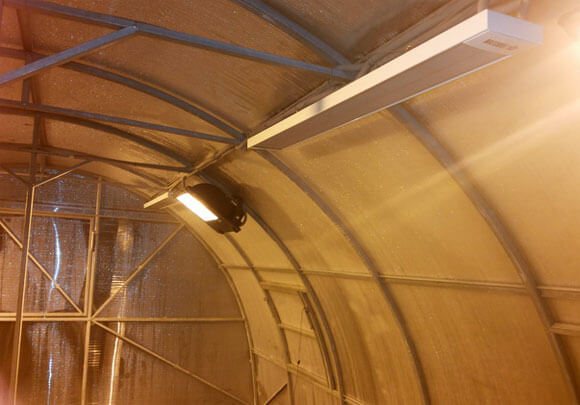

As for the number of heaters, there should be one device for every 1.5-3 meters of area. The distance between them depends on the size of the greenhouse and the height at which the devices are located. The higher the device is located, the more area it heats. Therefore, if possible, you should install the heaters higher, then you will need a smaller number of them. However, one must not forget that the higher the device is, the less heat the plants receive. Still, it is better not to save, but proceed from how much more comfortable the crops will be.
You can also use 250W devices. In this case, more appliances will be needed to achieve the optimum temperature. The distance between them should be 1.5 meters. The height of their placement above the plants will also need to be determined on our own experience. The position of the heaters should remain the same until the seedlings begin to grow. Gradually, as the plants grow, the devices are raised to a greater height.Heaters of this power are small in size and weight, they are simply hung on wires. The height of the devices is very easy to adjust - just pull or release the wire.
There are some guidelines that will make infrared heating for greenhouses as efficient and economical as possible. For example, they can be staggered - then the room will be evenly heated over the entire area, and the energy consumption will be less. In this case, the number of unheated areas will be minimal. However, this advice can only be used if you need to evenly heat the entire greenhouse. If it is necessary to create different temperatures in different parts of the room, you should not follow this recommendation. In this case, you need to install heaters in those places where you want to achieve a higher temperature regime.
Heating the greenhouse with an infrared heater, see the video:









